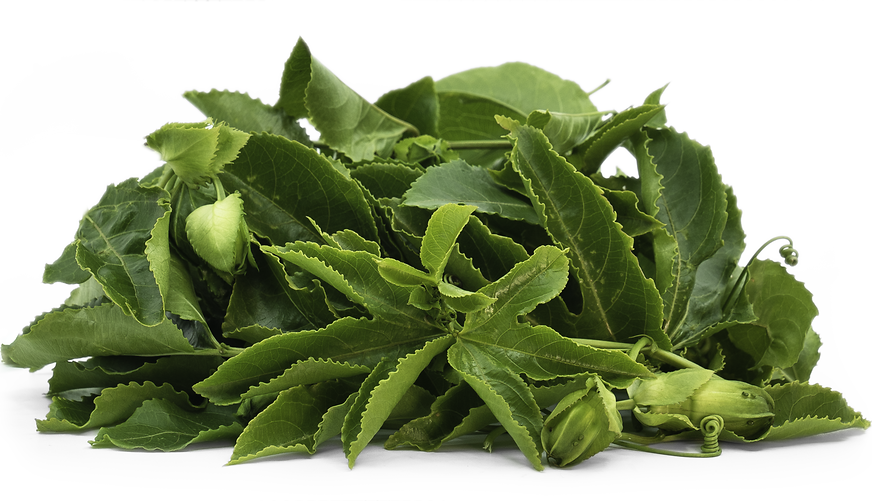


Passionfruit Leaves
Estimated Inventory, lb : 0
Description/Taste
Passion fruit leaves are small to medium in size and are deeply lobed and oblong in shape, averaging 7-20 centimeters in length. Each leaf has 3-5 lobes, depending on the variety, and the upper surface is dark green, smooth, and glossy while the underside is pale green and matte. The leaves grow in an alternate pattern and have serrated, or toothed edges. Passion fruit leaves are tender and have a mild green flavor. The leaves grow on a sprawling, evergreen vine that climbs and attaches itself to other objects using small green tendrils.
Seasons/Availability
Passion fruit leaves are available year-round.
Current Facts
Passion fruit leaves, botanically classified as Passiflora edulis, grow on a fast climbing vine that can spread 4-6 meters a year and are members of the Passifloraceae family. There are over four hundred species within the Passifloraceae family, and the passion fruit received its name from the Latin word “passio” which means passion, or suffering. In the 1700s, Spanish missionaries used these flowers in South America to describe the Christian crucifixion story using the flower’s appearance as religious symbolism to indigenous residents. Today the passion fruit plant is mainly used for its fruits, but the leaves are growing in popularity as an additional crop and culinary ingredient.
Nutritional Value
Passion fruit leaves contain fiber, vitamin A, vitamin C, and niacin. They also contain alkaloids such as Harman, which may have sedative and soothing properties.
Applications
Passion fruit leaves can be used in both raw and cooked applications such as boiling, sautéing, and frying. They can be sliced thinly and used as a leafy vegetable in salads or mixed into sambals and served over rice. Passion fruit leaves can also be cooked into soups, curries, stir-fries, pasta, and quiches. They are similar in texture and flavor to spinach and can often be substituted in recipes for the green. In addition to cooking, Passion fruit leaves can be boiled and made into a calming tea. Passion fruit leaves pair well with onion, green chilies, lime, coconut, and meats such as chicken, beef, and pork. They will keep for a couple of days when stored in a plastic bag in the refrigerator.
Ethnic/Cultural Info
For centuries in the Amazon, Passion fruit leaves were used as a poultice for cuts and bruises and as a natural pain reliever. They would also boil the leaves to makes teas to help with insomnia. During the mid-1800s, Passion fruit leaves were also used for aches and pains in the Southern United States. They used them medicinally to help reduce symptoms of colic, epilepsy, and convulsions.
Geography/History
Passion fruit is believed to be native to the Amazon rainforest along the borders of Brazil, Argentina, and Paraguay. It was then spread to Europe via explorers and trade routes and made its way to the United States in the early 19th century. By the 20th century, Passion fruit had become naturalized throughout most of the subtropical and tropical regions of the world. Today Passion fruit leaves can be found mostly in home gardens and select fresh markets in South and Central America, the United States, the Caribbean, Africa, Southeast Asia, and Australia.
Recipe Ideas
Recipes that include Passionfruit Leaves. One
| Food Corner |
|
Passion Fruit Leaves Sambola (Raw Passion Fruit Leaves Salad) |




